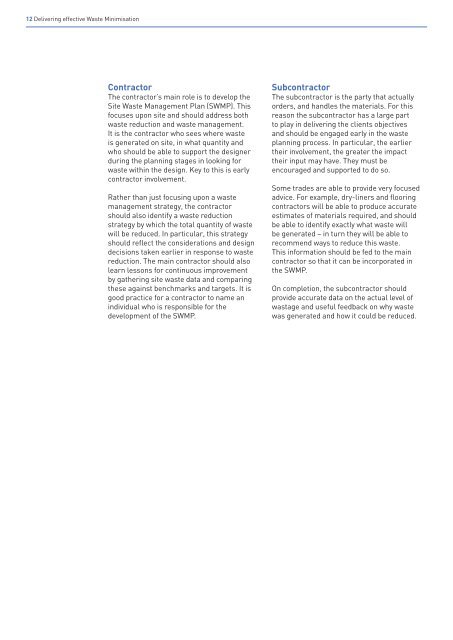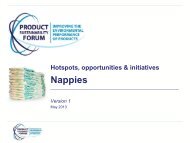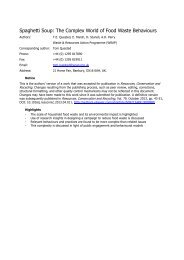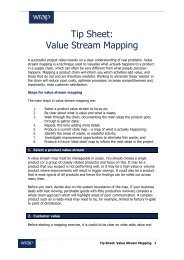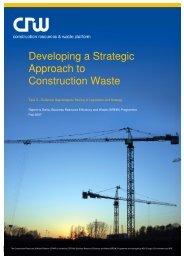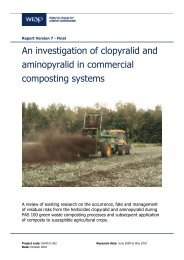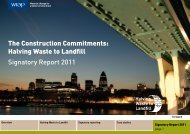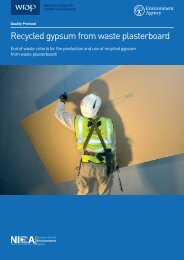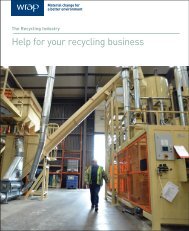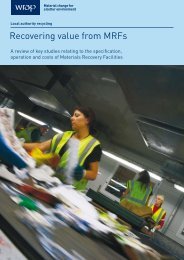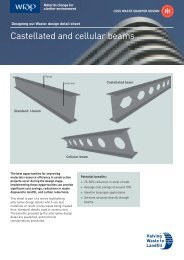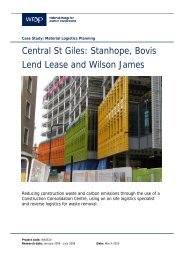Delivering effective Waste Minimisation - Wrap
Delivering effective Waste Minimisation - Wrap
Delivering effective Waste Minimisation - Wrap
Create successful ePaper yourself
Turn your PDF publications into a flip-book with our unique Google optimized e-Paper software.
12 <strong>Delivering</strong> <strong>effective</strong> <strong>Waste</strong> <strong>Minimisation</strong><br />
Contractor<br />
The contractor’s main role is to develop the<br />
Site <strong>Waste</strong> Management Plan (SWMP). This<br />
focuses upon site and should address both<br />
waste reduction and waste management.<br />
It is the contractor who sees where waste<br />
is generated on site, in what quantity and<br />
who should be able to support the designer<br />
during the planning stages in looking for<br />
waste within the design. Key to this is early<br />
contractor involvement.<br />
Rather than just focusing upon a waste<br />
management strategy, the contractor<br />
should also identify a waste reduction<br />
strategy by which the total quantity of waste<br />
will be reduced. In particular, this strategy<br />
should reflect the considerations and design<br />
decisions taken earlier in response to waste<br />
reduction. The main contractor should also<br />
learn lessons for continuous improvement<br />
by gathering site waste data and comparing<br />
these against benchmarks and targets. It is<br />
good practice for a contractor to name an<br />
individual who is responsible for the<br />
development of the SWMP.<br />
Subcontractor<br />
The subcontractor is the party that actually<br />
orders, and handles the materials. For this<br />
reason the subcontractor has a large part<br />
to play in delivering the clients objectives<br />
and should be engaged early in the waste<br />
planning process. In particular, the earlier<br />
their involvement, the greater the impact<br />
their input may have. They must be<br />
encouraged and supported to do so.<br />
Some trades are able to provide very focused<br />
advice. For example, dry-liners and flooring<br />
contractors will be able to produce accurate<br />
estimates of materials required, and should<br />
be able to identify exactly what waste will<br />
be generated – in turn they will be able to<br />
recommend ways to reduce this waste.<br />
This information should be fed to the main<br />
contractor so that it can be incorporated in<br />
the SWMP.<br />
On completion, the subcontractor should<br />
provide accurate data on the actual level of<br />
wastage and useful feedback on why waste<br />
was generated and how it could be reduced.


